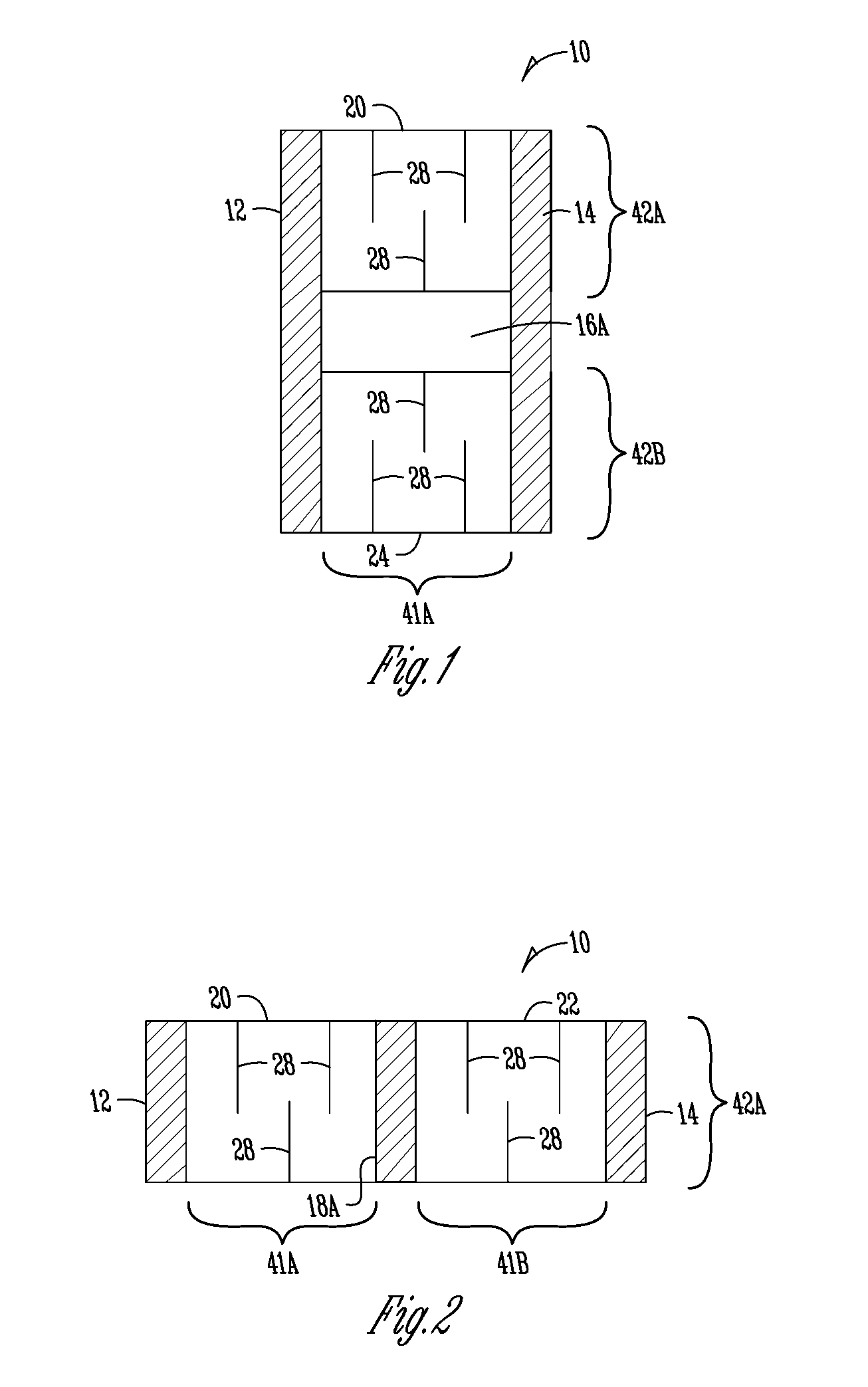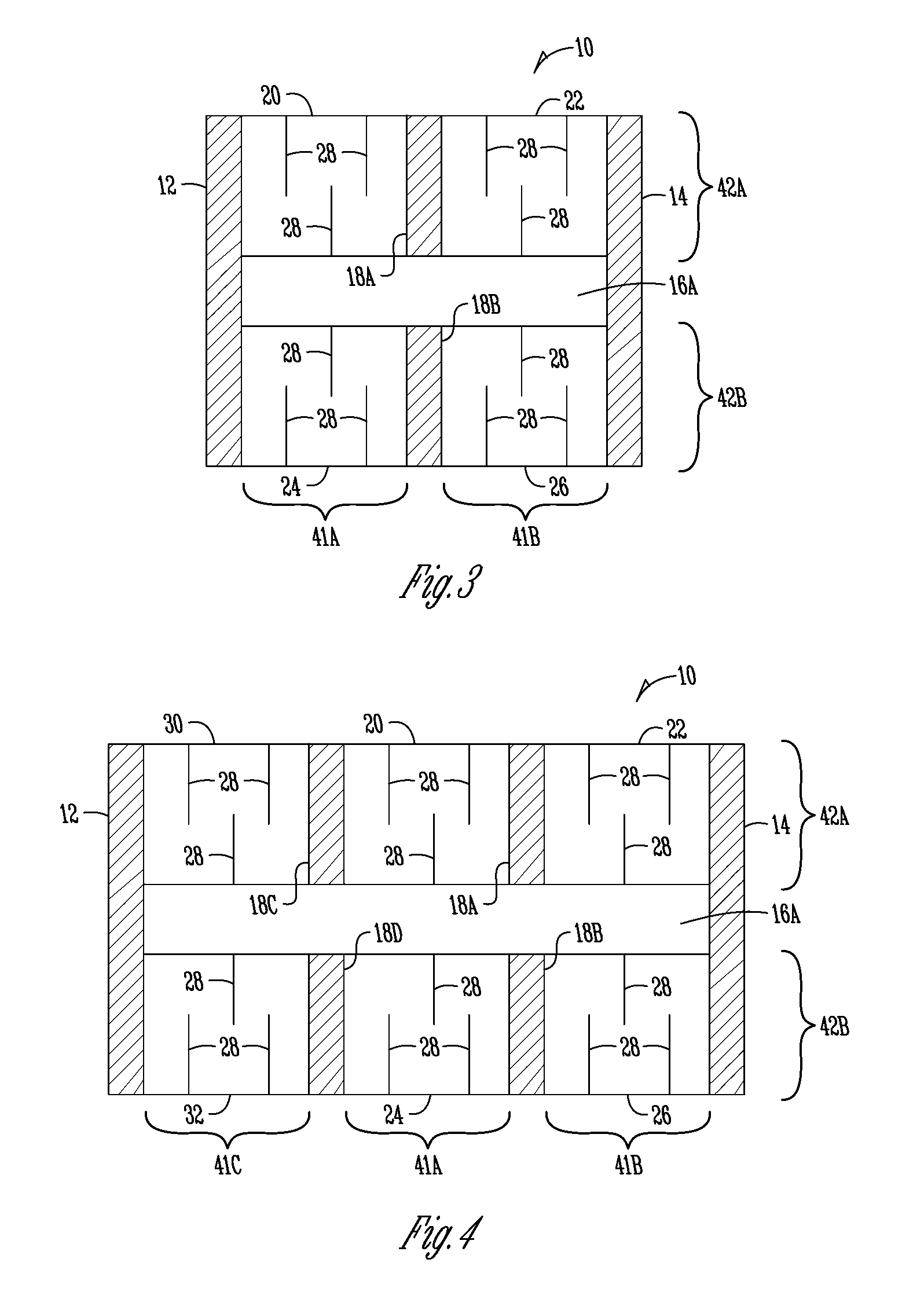Power resistor
a technology of resistor and power supply, applied in the direction of resistor details, resistor adapters for applying terminals, envelope/housing resistor manufacturing, etc., can solve the problem of not being able to address the approach
- Summary
- Abstract
- Description
- Claims
- Application Information
AI Technical Summary
Benefits of technology
Problems solved by technology
Method used
Image
Examples
Embodiment Construction
[0028]FIG. 3 illustrates one embodiment of a free standing resistor 10 formed of a metal strip which is segmented. The resistor 10 has a first conductive strip 12 and an opposite second conductive strip 14 to form opposite terminals for the resistor 10. An open area 16A is shown between the first conductive strip 12 and the opposite second conductive strip 14. Segmenting conductive strips 18A, 18B are also shown. The open area 16A and the segmenting conductive strips 18A, 18B serve to segment the resistive element of the resistor 10 into four segments 20, 22, 24, 26. Within each of the four segments 20, 22, 24, 26, slots 28 are cut to adjust resistivity and form a serpentine current path.
[0029]The configuration shown in FIG. 3 provides significant advantages. In particular, the segmentation forces the heat to be spread out over a larger portion of the resistive element thus reducing the peak temperature in any one spot. In particular, compared to an unsegmented resistive element wit...
PUM
| Property | Measurement | Unit |
|---|---|---|
| conductive | aaaaa | aaaaa |
| thermally conductive | aaaaa | aaaaa |
| electrically insulative | aaaaa | aaaaa |
Abstract
Description
Claims
Application Information
 Login to View More
Login to View More - R&D
- Intellectual Property
- Life Sciences
- Materials
- Tech Scout
- Unparalleled Data Quality
- Higher Quality Content
- 60% Fewer Hallucinations
Browse by: Latest US Patents, China's latest patents, Technical Efficacy Thesaurus, Application Domain, Technology Topic, Popular Technical Reports.
© 2025 PatSnap. All rights reserved.Legal|Privacy policy|Modern Slavery Act Transparency Statement|Sitemap|About US| Contact US: help@patsnap.com



